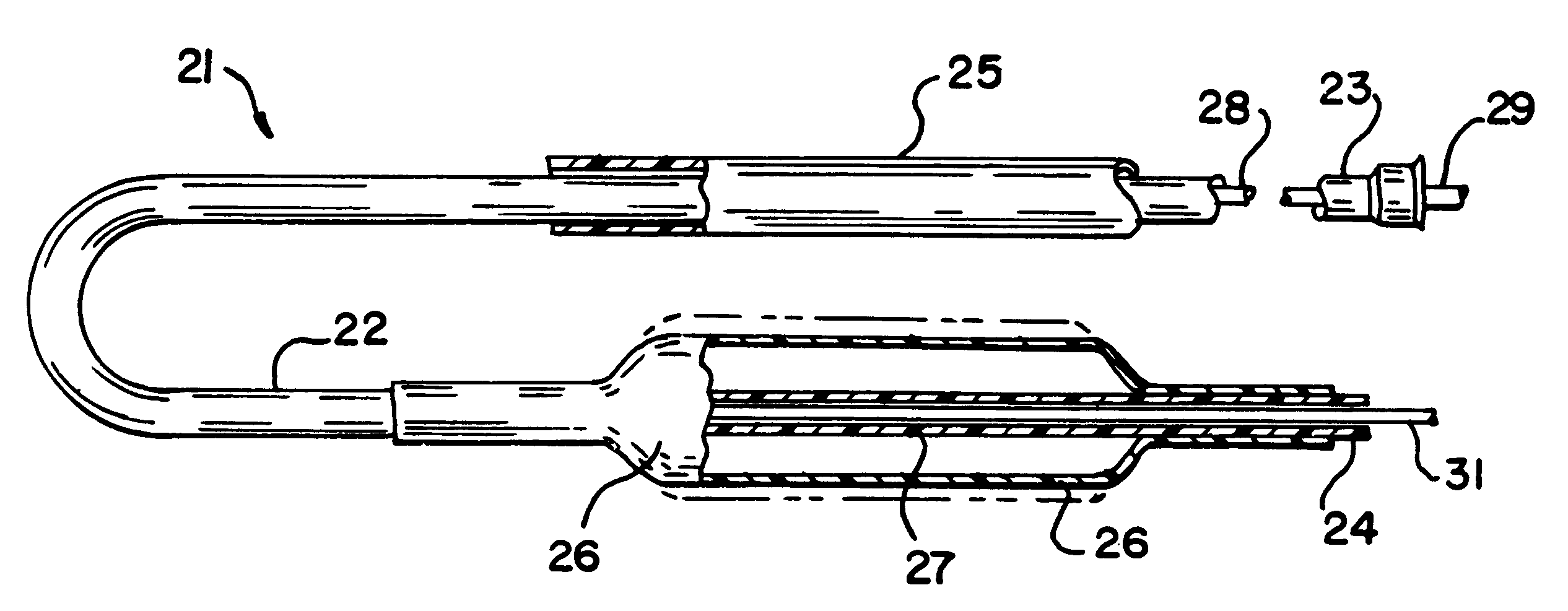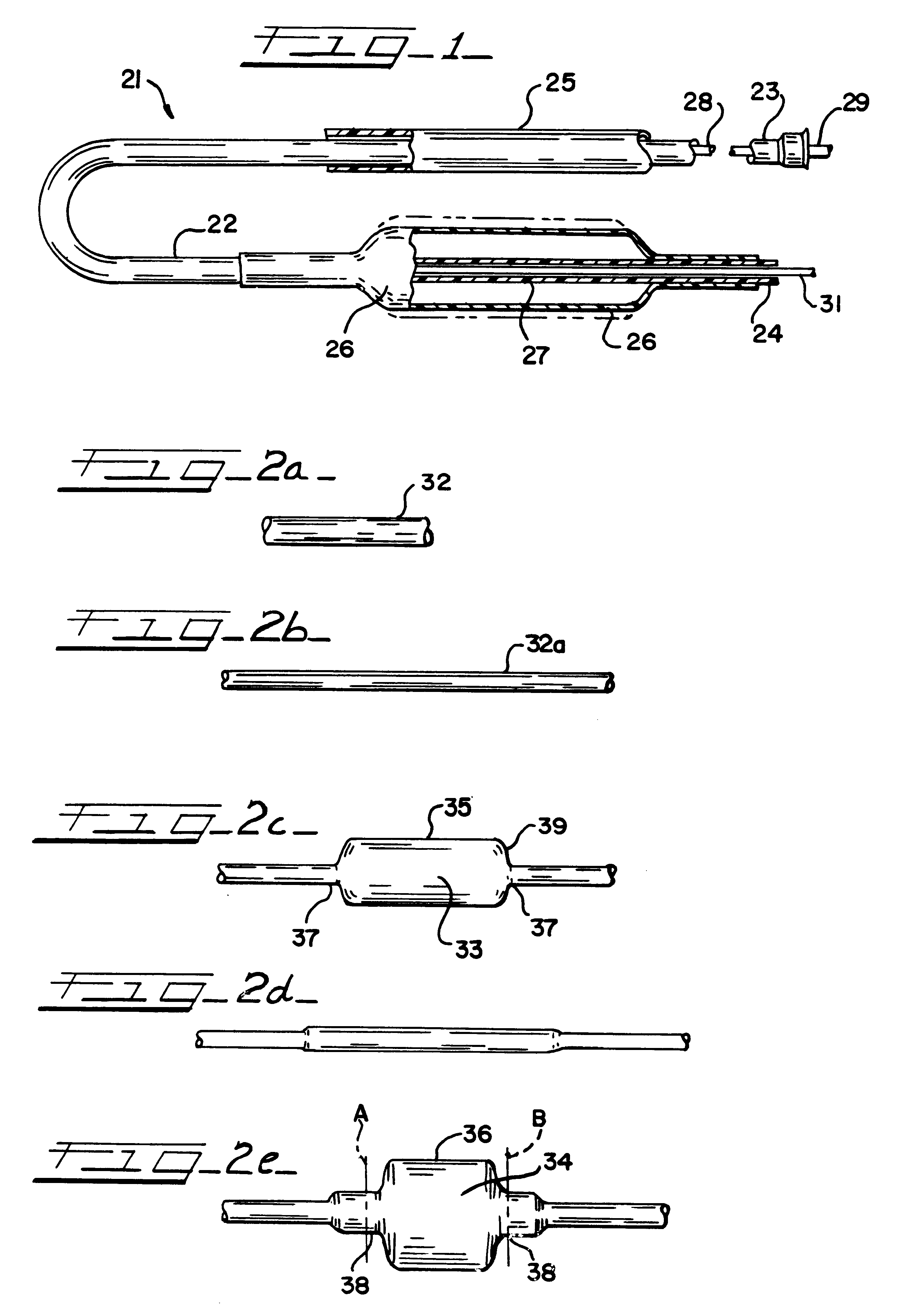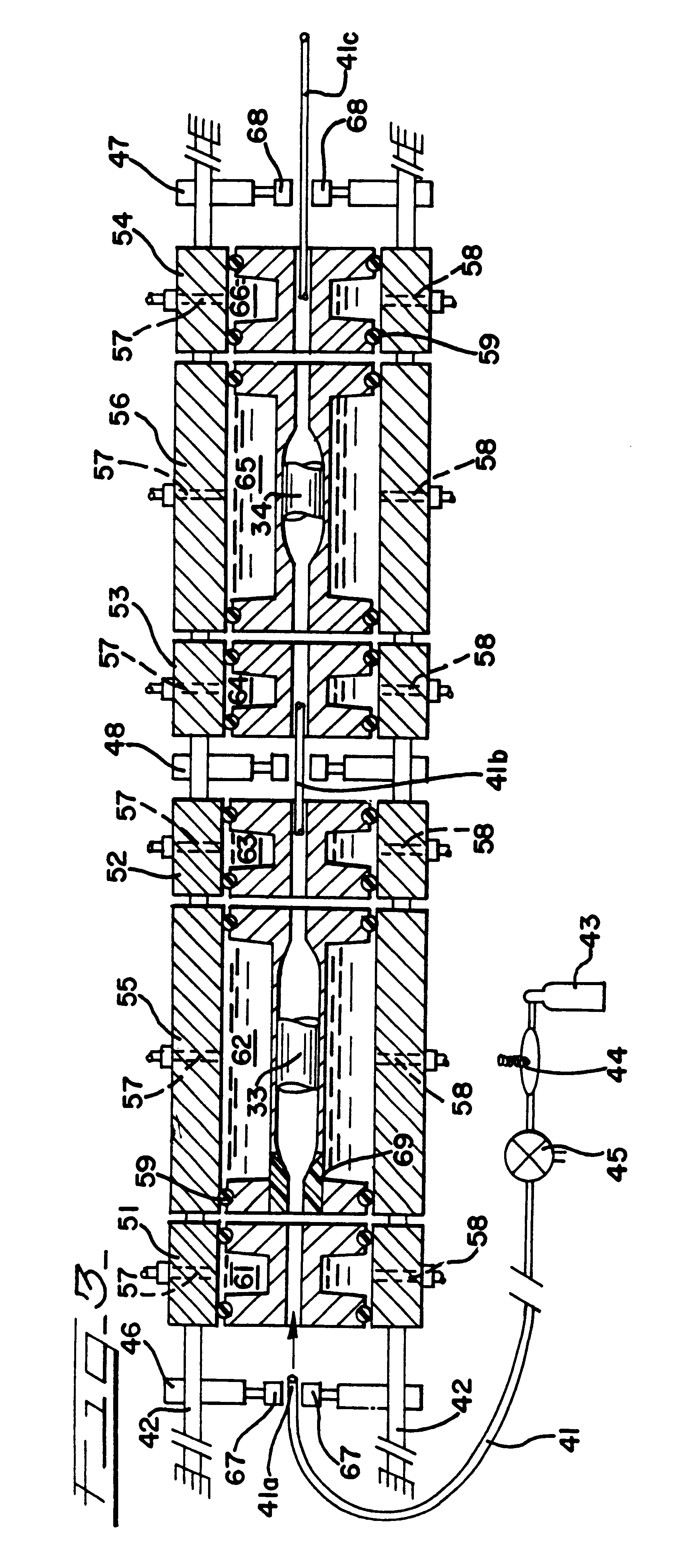Balloons for medical devices and fabrication thereof
a technology for medical devices and balloons, applied in the field of balloons for medical devices, can solve the problems of low tensile strength, severe limitations in further extension, and undesirable properties in addition to general non-distinction, and achieve the effects of good strength, convenient use, and convenient us
- Summary
- Abstract
- Description
- Claims
- Application Information
AI Technical Summary
Benefits of technology
Problems solved by technology
Method used
Image
Examples
Embodiment Construction
An illustrative catheter is generally designated in FIG. 1 by reference numeral 21. Catheter 21 includes a catheter tube 23 having a proximal end 23 and a distal end 24. A guiding catheter 25 is also illustrated. A medical balloon 26 is shown secured to the distal portion of the catheter tube 22 in a location overlying one or more apertures 27 through the catheter tube. Extending through the lumen of the catheter tube 22 is an inner elongated body 28, such having a proximal end 29 and a distal tip end 31. The inner body 28 may be solid or have an internal lumen, depending upon the function hat the inner body is to perform, whether it be simply a guiding function or whether it is intended to also provide the capability to insert materials into the bloodstream or measure parameters of the bloodstream, or the like.
Except for the balloon 26, all of these various components perform functions that are generally appreciated in the art. Typically with the aid of the guiding catheter 25, the...
PUM
| Property | Measurement | Unit |
|---|---|---|
| temperature | aaaaa | aaaaa |
| temperature | aaaaa | aaaaa |
| thickness | aaaaa | aaaaa |
Abstract
Description
Claims
Application Information
 Login to View More
Login to View More - R&D
- Intellectual Property
- Life Sciences
- Materials
- Tech Scout
- Unparalleled Data Quality
- Higher Quality Content
- 60% Fewer Hallucinations
Browse by: Latest US Patents, China's latest patents, Technical Efficacy Thesaurus, Application Domain, Technology Topic, Popular Technical Reports.
© 2025 PatSnap. All rights reserved.Legal|Privacy policy|Modern Slavery Act Transparency Statement|Sitemap|About US| Contact US: help@patsnap.com



